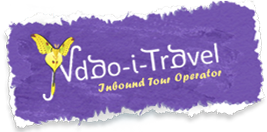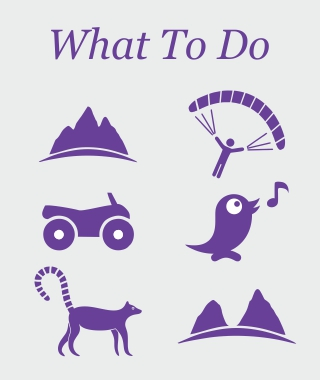Antananarivo, Madagascar capital: the city of the thousand
The city occupies the flat banks of the Ikopa River and spreads up the ancient granite and gneiss ridges that tower up from the plains; the highest points of these ridges are dominated by Tana’s most historic buildings.
Antananarivo offers a multitude of treasures to discover. There are numerous activities to do there, for everyone of different tastes. Whether you prefer historical culture, fauna and flora, or adventure, the capital of Madagascar will meet all of your expectations. To learn more about Malagasy culture and history, you can visit the royal palaces or historical sites such as the Upper Town of the Pavilion Market, filled with atypical architectures. Alongside an experienced guide, you will have the opportunity to quickly learn more about Malagasy people and their history.
There are a lot of sites scattered in the heart of the city and its outskirts with wildlife. You’ll have the opportunity to discover the endemic animals of the Tsimbazaza Park, or in the private Lemur’s park of Mandraka. You will be able to find lemurs, multicolored endemic birds, and unique frogs on these sites, which you can visit with your family or friends, accompanied by our guide. The surrounding areas of the capital will allow you to practice a variety of outdoor activities such as canoeing, horseback riding, tree climbing or trekking in mountains. There are a variety of choices offered to you.
With your family, visit a “rova,” a palace of the royal era, or wander through the animal parks to discover the fauna and flora visible all around the island.
In solo or in couple, there is a trek to go through the 12 sacred hills to discover the Malagasy gastronomy in one of the restaurants of the upper city. The appetite sharpened by these physical activities, you can taste the simple but abundant dishes offered by small popular restaurants or more respectable and fashionable establishments offering a vast range of kitchens of all the countries, but leaning especially towards the Asian taste of Vietnam, China, Japan and Korea, or test the native, nutritive but very simple dishes of a really moderate price.
Antananarivo offers you a rich journey both for the young and the elderly. What you can see and do here:
*Enjoy journey in our incredible, unique, decorated in the best traditions of the colonial era "Trans Lemuria Express" with impeccable service on board;
*Visit the Chocolaterie Robert factroy and Chocolatière boutique. Chocolaterie Robert is a traditional cocoa producer and chocolate maker using Trinitario and Criollo cocoa beans organically grown in the Sambirano region (Ambanja). The result is an irresistible range of pralines and chocolate bars made by ancient recipes containing only natural Malagasy ingredients. Prize-winner "GOLDEN BEAN AWARD 2017";
*Visit The PALA. The PALA jewelers is a gem trader with a reputation for its premium quality gemstones and handcrafted jewelry design. Established in 1922, PALA is one of the original gem traders of Indian heritage to have settled on Madagascar. Today, the PALA Group is in its third generation of business;
*Visit the Casino Colbert. Casino where gamblers become winners;
*Excursion to the Ramsar park at Alarobia Lake. Lake Alarobia may be located at the heart of Antananarivo, but it is a vital refuge and nesting site for 14 threatened endemic bird species such as the Madagascar pond heron, Meller's duck and Madagascar little grebe. The site is classified RAMSAR (International Convention on Wetlands);
*Excursion to Imerintsiatosika Lemur’s Park. This zoological park at the gates of the capital has been created in 2001, with the goal to democratize the discovery of different species of lemurs and in long term, reintroduce them into their natural habitat. You will walk in a 5 hectare botanical park where you will see 9 species of lemurs in complete freedom. This is a perfect excursion for the whole family, since even the youngest ones can enjoy this activity safely;
*Visit the UNESCO World Heritage Site the Ambohimanga Rova, it is a significant and fascinating historical site and well worth a half-day trip (or longer). Although less well-known than the Rova in Antananarivo, it is in many ways more impressive, as it preserves intact some of the original eighteenth-century structures and brickwork of King Andrianampoinimerina, and there are tremendous views of the surrounding countryside and the northern suburbs of Tana;
*Visit the Ivato crocodile farm. This farm is also called “Croc Farm,” and is located about 15 minutes from Antananarivo. This breeding farm deserves to be visited with family and friends. It will be a change of scenery and you will be able to observe the dangerous Nile crocodiles. Besides, you will be able to see lemurs, fossa (the only predator of Madagascar), snakes, and ostriches in exotic settings where palm trees, lemons and orchids will grow freely;
*Visit Tsimbazaza park. This park is the real “green lung” of the capital, and is located 15 minutes from the city center. You will feel immersed in a pleasant botanical garden where many plant and animal species co-exist as well as a museum of paleontology and ethnology. Nature lovers will appreciate the number of exotic and endemic plants in the park. You can also have a walk throughout the zoo, where you can spot many species, including the famous lemurs, but also endemic birds, snakes, chameleons, frogs, etc. The park is ideal for a hike in nature, while being in the heart of the city;
*Excursion «Art in the Tana-city» and Excursion «Tana by night» (including a night-clubs);
*Visit Malagasy silk workshop the “lamba landy” and the crafts markets such as “artisanal market of Andravoahangy”, or “the artisanal market of the Route Digue”, these markets offer several and various articles of beauty at reasonable prices which one can bargain.
Brief history of Tana. The first significant settlement on the site now known as Antananarivo was established around 1650 on the hilltop called Analamanga (a name recently adopted for the region surrounding the modern capital). As the Merina peoples gradually coalesced into a single kingdom, there were repeated attempts to capture this prized site. King Andrianampoinimerina was eventually successful in 1793, moving his court to the highest point in the area, overlooking the extensive rice paddies in the lakes and marshes below. He called the place Antananarivo, meaning “City of a Thousand”. From this strategic bastion, the nineteenth-century Merina dynasty ruled the kingdom and eventually most of the island, until the French captured the city in October 1895. Following the bloody Menalamba (“red shawl”) rebellion, just two years later, against what was by then a decadent, Western-backed royal court, the French abolished the monarchy, sent the reigning queen, Ranavalona III (reigned 1883–1897), into exile in Algeria and established a colony based here that lasted until independence in 1960. The city has since been the focal point for most of modern Madagascar’s successive coups and republics and is a barometer for the health of Malagasy society. Today, despite the fast-expanding population of well over one million, the mood in Tana is the most positive it has been for years, following the democratic election of a credible government in 2014.
Watch more photos about Antananarivo here.







